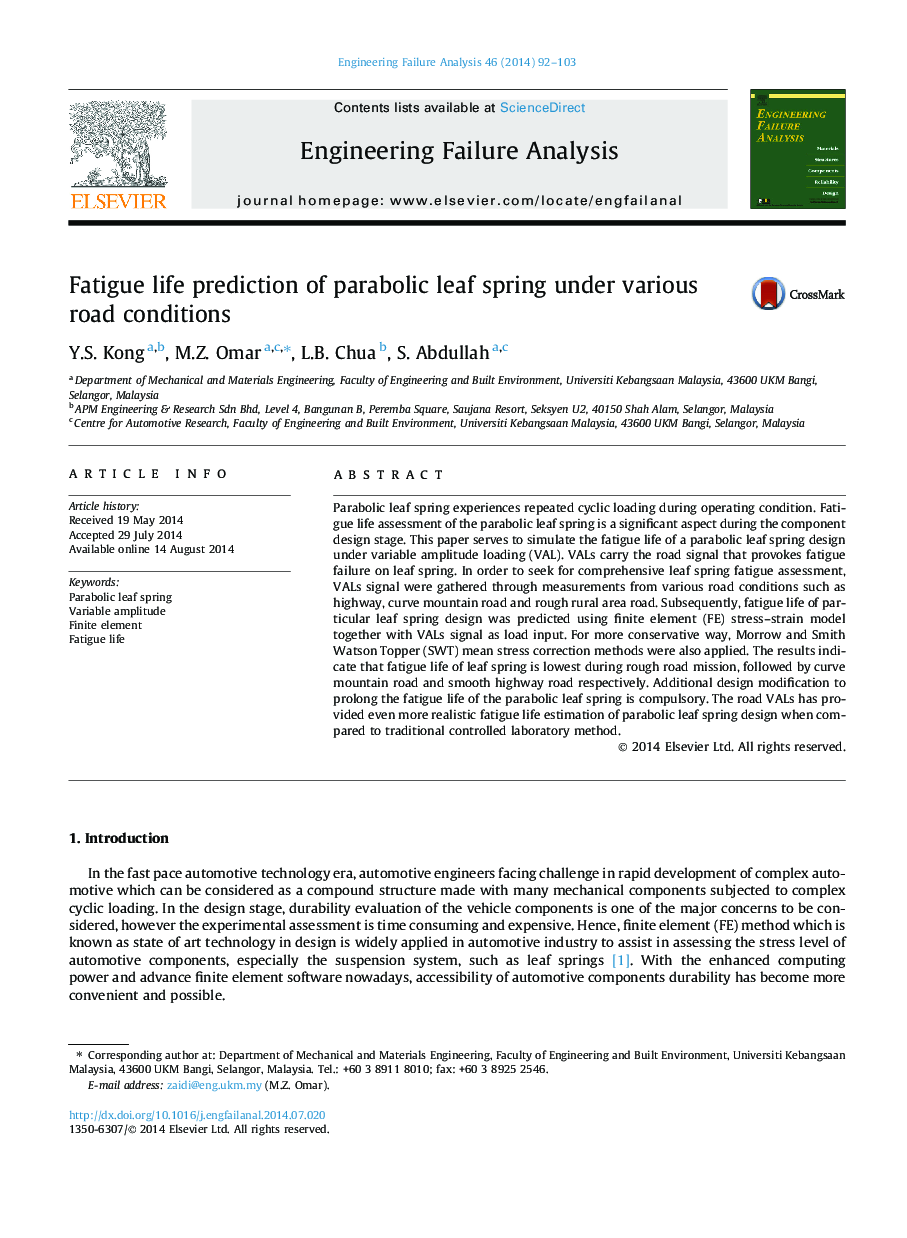| Article ID | Journal | Published Year | Pages | File Type |
|---|---|---|---|---|
| 773738 | Engineering Failure Analysis | 2014 | 12 Pages |
•Fatigue life of parabolic spring is dependence of road conditions.•VALs were collected experimentally from highway, curve and rough roads.•Fatigue life simulation of spring use VALs as load input.•The spring under rough road condition has the lowest fatigue life.
Parabolic leaf spring experiences repeated cyclic loading during operating condition. Fatigue life assessment of the parabolic leaf spring is a significant aspect during the component design stage. This paper serves to simulate the fatigue life of a parabolic leaf spring design under variable amplitude loading (VAL). VALs carry the road signal that provokes fatigue failure on leaf spring. In order to seek for comprehensive leaf spring fatigue assessment, VALs signal were gathered through measurements from various road conditions such as highway, curve mountain road and rough rural area road. Subsequently, fatigue life of particular leaf spring design was predicted using finite element (FE) stress–strain model together with VALs signal as load input. For more conservative way, Morrow and Smith Watson Topper (SWT) mean stress correction methods were also applied. The results indicate that fatigue life of leaf spring is lowest during rough road mission, followed by curve mountain road and smooth highway road respectively. Additional design modification to prolong the fatigue life of the parabolic leaf spring is compulsory. The road VALs has provided even more realistic fatigue life estimation of parabolic leaf spring design when compared to traditional controlled laboratory method.
